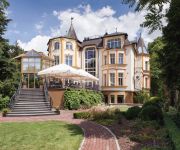Facts and Data
Webpages:
Official Unesco Page
Basis Data:
Unesco World heritage since: 2006
Size of heritage: 37 ha
- Buffer zone: 190 ha
Coordinates:
Longitude: 17,077°
Latitude: 51,107°
Summary
The Centennial Hall, a landmark in the history of reinforced concrete architecture, was erected in 1911-1913 by the architect Max Berg as a multi-purpose recreational building, situated in the Exhibition Grounds. In form it is a symmetrical quatrefoil with a vast circular central space that can seat some 6,000 persons. The 23m-high dome is topped with a lantern in steel and glass. The Centennial Hall is a pioneering work of modern engineering and architecture, which exhibits an important interchange of influences in the early 20th century, becoming a key reference in the later development of reinforced concrete structures.
Location on Map
Show bigger map on Openstreetmap
Centennial Hall in Wrocław: A UNESCO World Heritage Site
The Centennial Hall, located in Wrocław, Poland, is a remarkable architectural masterpiece that has been recognized as a UNESCO World Heritage site since 2006. Situated in the Silesia Region of the Lower Silesian Voivodship, this historic venue holds immense cultural and historical significance for the city and the entire country.
History
The Centennial Hall, also known as Hala Stulecia in Polish, was constructed between 1911 and 1913 to commemorate the centenary of the Battle of Leipzig. Designed by the renowned German architect Max Berg, this iconic structure was initially intended to serve as a multi-purpose venue for exhibitions, concerts, and sporting events.
The construction of the Centennial Hall was a groundbreaking achievement in architectural engineering. It was one of the first buildings to utilize reinforced concrete, a revolutionary material at the time. The hall's unique design, characterized by its massive dome and symmetrical layout, showcases the influence of the Art Nouveau and Modernist architectural styles.
Throughout its history, the Centennial Hall has witnessed numerous significant events. It hosted the 1929 International Exhibition, which attracted visitors from around the world and showcased the technological advancements of the time. The hall also played a crucial role during the Siege of Breslau in World War II, serving as a shelter for thousands of civilians.
Current State
Today, the Centennial Hall stands as a symbol of Wrocław's rich cultural heritage and architectural prowess. The site underwent extensive renovations in the late 20th century to restore its original splendor and preserve its historical value. These efforts were recognized by UNESCO, leading to its inscription as a World Heritage site.
The Centennial Hall complex encompasses not only the main hall but also the surrounding park, which covers an area of approximately 26 hectares. The park, known as the Centennial Hall People's Garden, is a popular recreational space for locals and visitors alike. It features beautiful green spaces, walking paths, and a picturesque pond.
The main hall itself continues to serve as a venue for various cultural and entertainment events. It hosts concerts, exhibitions, conferences, and trade fairs, attracting both national and international audiences. The hall's exceptional acoustics and capacity to accommodate large crowds make it a sought-after location for prestigious events.
Visitors to the Centennial Hall can also explore the adjacent Wrocław Multimedia Fountain, a mesmerizing water and light show that delights spectators with its synchronized performances. This modern addition to the complex enhances the overall experience and further highlights the site's cultural significance.
In conclusion, the Centennial Hall in Wrocław, Poland, is a UNESCO World Heritage site that stands as a testament to architectural innovation and historical importance. Its rich history, unique design, and ongoing cultural relevance make it a must-visit destination for those seeking to explore the cultural heritage of the Silesia Region and the Lower Silesian Voivodship.
Hotels and places to stay
Radisson Blu Hotel
Hotel Grape
Jana Pawla II
Wodnik
Villa Rezydent
Gem
Mojito Apartments
System Hotel Wrocław
WenderEDU Business Center
Wratislavia
Videos from the area
Videos provided by Youtube are under the copyright of their owners.
















